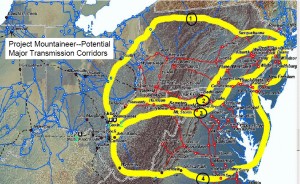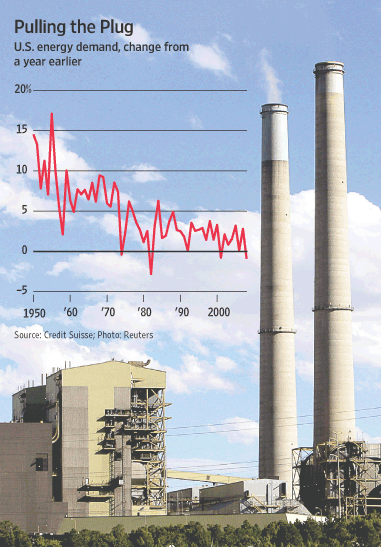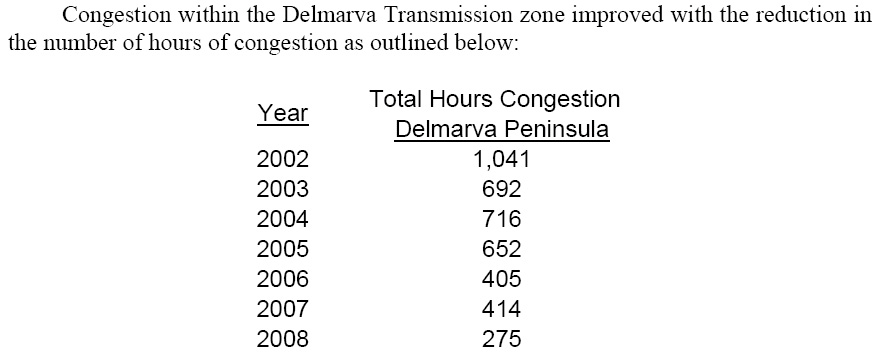PSEG’s Izzo disses Midwest Transmission
September 30th, 2009
Did I hear that right???
I’m fighting with PSEG out in New Jersey, representing Stop the Lines on the Susquehanna Roseland transmission line. PSEG can be vile… but on this one point, PSEG’s Ralph Izzo is right. Now, if we can just get him to be consistent.
Transmission is not rocket science, and Izzo statements reflect that he understands what Midwest transmission is all about — $$$ and coal. He and PSEG have joined the many who are standing up to Midwest transmission plans. Now, is the Midwest paying attention? As PUC Chair Boyd said at the last Legislative Energy Commission meeting, they need a solid business plan. Guess what — they don’t have one, DUH!!!! There’s no market (Doesn’t Chair Boyd or anyone else in the room think there’s something a little too cozy about Boyd advocating for transmission with MISO???).
Today at a conference, PSEG’s Izzo let loose and let them have it:
Here’s some propaganda from PSEG:
In short:
Now just who does this sound like?!?!?!?! Hilarious… dig this, though he’s not admitting the INTENTIONALITY of the transmission scam:
And this broad view so contradicts their Susquehanna-Roseland transmission plan, which is all about coal from Amos = it’s the NE part of “Line 1” in Project Mountaineer. PSEG, you can’t have it both ways! Let us hope that now that he’s spouting opposition to the Great Midwestern Transmission Scam he’ll see the scam of New Jersey transmission. At least we’ll now have this to use. THANK YOU, RALPH IZZO!
MAPP transmission line under the microscope
September 26th, 2009
Before we get started, a note about need. As usual, this transmission line is not needed. PEPCO’s Mid-Atlantic Power Pathway, or MAPP line, not to be confused with Mid-Continent Area Power Pool (MAPP), is the red line on the map above. PJM, the private utility transmission promotion entity, has admitted that the Indian River to Salem part of the line is not justified, and have taken it off their wish list. Now, about the rest of it…
And where did MAPP come from? It’s part of Project Mountaineer, which is planned to bring cheap coal generation from the Amos plant and others, like the coal plant planned by Delaware Electric Co-op. Without this transmission line, the coal generation would not be used in the Mid-Atlantic or parts further NE, i.e., New York.
The MAPP transmission line had a day of scrutiny last week when MAPP opposition groups hosted a tour and luncheon featuring former Maryland Gov. Harry Hughes speaking against the line. State Senators and staff from both Maryland U.S. Senators were present, and it looks like they got an earful and eyeful! They used balloons to show the height of the lines, as we did in Susquehanna-Roseland last month, and Chisago years ago.
Here’s the full story:
Tour focuses on MAPP problems
By DUSTIN HOLT Special from The Star DemocratPublished: Friday, September 25, 2009 9:56 AM CDT
The Eastern Shore Land Conservancy and the Dorchester Citizens for Safe Energy along with the Dorchester County Tourism Department organized a tour through Dorchester County last week to show the impact the proposed Mid-Atlantic Power Pathway project would have on the county’s heritage, agriculture and wildlife.
Pepco Holdings is proposing a 27-mile high-voltage electrici transmission line crossing Dorchester County as part of the MAPP project, from Taylor’s Island to Vienna.
The ESLC suggests the towers would be 150 feet tall, though Pepco puts them between 110 and 130 feet. According to the ESLC, the towers would consume 650 acres of county agriculture, forest and rural lands.
The Sept. 16 tour included lunch at the E.A. Murphy Community Center in Vienna, with former Maryland Gov. Harry Hughes as a guest speaker.
“Many of us are opposed to it (the MAPP Project) because insufficient studies have been done for this line,” said Hughes, an advisory committee member of the ESLC. “Have they looked at alternatives?”
Hughes said one alternative is to improve the Vienna Power Plant, which is not operating at full power. He said another alternative is to introduce energy conservation standards to reduce the need for the power lines.
“This is a massive project that will disrupt the landscape,” Hughes said.. “There are too many unknowns with no alternatives considered. As far as I can see, there is no need to rush into this.”
Vienna Mayor Russell Brinsfield, one of the founders of ESLC, said MAPP would permanently and negatively impact Vienna. He said alternatives should include the state promoting energy conversation and renewable resources.
State Sen. Richard Colburn, R-37-Mid-Shore; Del. Addie Eckardt, R-37B-Dorchester; and Jeannie Haddaway-Riccio, R-37B-Talbot, were in attendance at the lunch in Vienna.
Eckardt said it is important to preserve the heritage and agriculture in the county, “Our biggest asset is our land, fisheries and agriculture.”
If MAPP project must move forward, Eckardt said, the state needs to look where the project will not be environmentally sensitive nor impair the landscape of the county.
The tour headed from Vienna, through Blackwater National Wildlife Refuge and back to Cambridge.
Dorchester Citizens for Safe Energy Chairman Libby Nagel said the power line would require about a 200-foot right-of-way.
To demonstrate the height of the towers, balloons were deployed to a height of about 150 feet.
Local farmer Lin Spicer said spraying crops would be ineffective with the power lines because planes would not be able to get below the lines. “We would be forced to spray from above the towers and the wind would blow the spray all around before it reached the crops,” he said.
Blackwater Manager Susan Baird said the MAPP towers would have a great impact on wildlife and wetlands. She said bald eagles need a living area of at least five miles. “They won’t fly over the towers, so you can’t tell me they or other birds will not move on to different locations outside of Dorchester County if the power lines are put here,” Baird said.
PJM demand down… AGAIN
August 17th, 2009
From WSJ article below, the chart says it all…
Another great Wall Street Journal article came out, again noting that demand is DOWN, DOWN, DOWN. This is pretty important given the massive infrastructure rush by the utilities. It’s showing what we’ve known all along, the 800 lb. gorilla in the corner that could/should stop any new infrastructure buildout.
Rebecca Smith, Wall Street Journal, wrote this piece, published last week:
Here’s the PJM Report it’s based on:
There are some choice snippets in the WSJ article, such as:
On Friday, the nation’s largest wholesale power market serving parts of
13 states east of the Rockies is expected to report that electricity
demand fell 4.4% in the first half of the year. That helped to push
down spot market prices by 40% during the first half of this year.
… and…
The price declines in this market, which extends from Delaware to
Michigan, come on top of a 2.7% drop in energy use in 2008 over 2007.
… and…
Power demand in Texas is down 3.2% so far this year due to business
contraction and reductions in employment which are causing many
households to economize.
… and …
But the flagging economy has resulted in a slump in demand that has jolted some energy markets. American Electric Power Co. and Southern Co., for example, both reported double-digit drops in industrial electricity use for the past quarter.
… and…
“There’s more supply than demand and prices are really low so it
doesn’t make sense to build anything,” says John Shelk, president of
the Electric Power Supply Association in Washington, D.C., a group that
represents power generators.
Once more with feeling… SUSQUEHANNA-ROSELAND TRANSMISSION IS NOT NEEDED!
7th Circuit tosses out FERC & PJM cost apportionment
August 13th, 2009
I was a big Posner fan in law school, mostly because he was so much fun to pick on, I so hate the “Chicago school.” But here’s another Posner, doing good! It’s a hilarious opinion, all the better because it so clearly tells FERC and PJM what to do with their rate shifting cost apportionment. GO POSNER!
Here’s the decision:
Two issues in this case:
1) PJM/FERC pricing based on marginal cost v. pricing including sunk costs. That one went for PJM/FERC, and American Electric and others lost in just a few paragraphs.
2) Where the action is — Ohio and Illinois Commissions objected to the 500+kV cost allocation on a pro rata basis, that “their rats should be raised by a uniform amount sufficient to defray the facilities’ costs.”
What’s particularly interesting to me is that this is all about “Project Mountaineer,” which PJM doesn’t even want to acknowledge exists! the Susquehanna-Roseland line that I’m working against is the NE part of line 1, and the MAPP line through now “just” a part of Delaware is the NE part of the southern line, line 4. Here’s the magnitude of Project Mountaineer – the Susquehanna-Roseland line is QUAD 500kV plus double circuiting the existing 230kV line, that’s one big project:
FYI, in the Cudahy dissent, he did some digging, and there is a Project Mountaineer tootnote quoting PJM stating that Project Mountaineer “would bring about substantial congestion relief and reliability improvements increasing Midwest-to-east transfers by 5,000 MW.” See Ventyx, Major Transmission Constraints in PJM (2007).
A quick sidebar… FYI, from Delaware Electric Cooperative 2009 Energy Plan – “CONFIDENTIAL”, arguing for the MAPP transmission project…
… and they report that transmission congestion is down 75% to 275 hours ANNUALLY! Really… so for that 275 hours we should build the $1.2 MAPP project? HOW STUPID DO YOU THINK WE ARE?
OK, back to Posners 7th Circuit decision. It was PJM’s idea, approved by FERC, to hit up all the utilities, and Illinois, a BIG example of the problem, would have had to pay out some $480 million while not receiving one dime of benefit. PJM used the theory that, well, PJM used to do it this way all the time before in massive infrastructure buildouts, but as Posner reminded them, that was then and this is now, PJM is a lot different now, Illinois wasn’t even part of the picture.
Posner was pissed off that there was no data at all to support their desired allocation, no data, no specifics about difficulties in assessing benefits, no lawsuits about inequities, no particulars, “[n]ot even the roughest estimate of likely benefits to the objecting utilities… oh yes, he let them have it… for page after page… and notes that FERC “brief devotes only five pages to the 500kV pricing issue.” FERC seems to presume a similar brainwashing in the courts that they and utilities presume of Commissions and legislatures, one that I see to often, that frantic claim of URGENT need, ‘WE’RE GOING TO FREEZE IN THE DARK IN AN INCUBATOR WITHOUT A JOB” theory, presented despite documented long term decrease in demand across the country. Once more with feeling, HOW STUPID DO YOU THINK WE ARE?
Oh, these guys irritate me. Anyway, check out this decision and consider the impact on all the 500kV and above projects applied for or waiting in the wings.
PSE&G’s PR machine
July 2nd, 2009
Here’s their PR machine:
Here’s the poop:
New Poll Finds Strong Public Support for PSE&G’s Transmission Line UpgradeJul 1, 2009 12:38 AM
Public Service Enterprise Group Inc.A recent poll finds that the majority of people in Morris and Sussex counties in New Jersey favors PSE&G’s plan to upgrade the Susquehanna-Roseland transmission line to ensure reliability of the electric grid.
The poll, conducted by the firm of Luntz, Maslansky Strategic Research, showed approximately 3-to-1 support for the project, with 60 percent of those surveyed saying they “strongly support” or “somewhat support” it, compared to 22 percent who “strongly oppose” or “somewhat oppose” the line. Support for the line was equally strong regardless of the respondent’s proximity to the line.
“It is evident that most people understand that the existing line, which went into service in 1931, can’t be expected to handle today’s demand for safe, reliable electric service without an upgrade,” said Ralph LaRossa, president and COO of PSE&G.
“If we don’t act, Morris and Sussex counties, as well as all of northern New Jersey, could experience widespread brownouts and blackouts by the summer of 2012,” LaRossa said. “That’s not our judgment at PSE&G. It’s the verdict of the independent experts empowered by the federal government to manage the electrical grid. It’s a warning we take very seriously.”
The poll showed that 81 percent of the people in these counties see America’s energy situation as either a “crisis” or “major problem.” LaRossa added, “Most people who live in this area clearly understand the need to do what is required to maintain and ensure reliability.”
PSE&G, which funded the poll, is seeking permission to invest $750 million on the upgrade, adding a 500-kilovolt line to the existing 230-kilovolt line, within an existing transmission right-of-way. The project would create the equivalent of nearly 4,000 jobs lasting one year each, according to a recent report by senior economists at Rutgers University. And by relieving some of the congestion that drives up electric rates in New Jersey, it would help contain electricity costs for homes and businesses in the region.
The Board of Public Utilities is considering PSE&G’s petition to upgrade the line and is expected to make a decision by the end of the year. Public hearings were held on June 11 and 18 in Sussex County; a third hearing will be held June 30 in Morris County. In addition, the New Jersey Highlands Council is expected to vote on PSE&G’s request for an exemption for the project at its June 25 meeting.
The Luntz, Maslansky survey was conducted by telephone with 525 utility ratepayers across Morris and Sussex counties. The survey captured a statistically significant population of each county. To make sure the survey elicited the opinions of those ratepayers most likely to be affected by the project, the survey included an oversample of 100 respondents self-selected as living near the current transmission line, as well as an oversample of 100 respondents who lived in towns known to be near the existing transmission line. All respondents were registered voters. The survey was in the field June 4-11 and has a margin of error of plus or minus 4.3 percent at the 95 percent confidence level.








